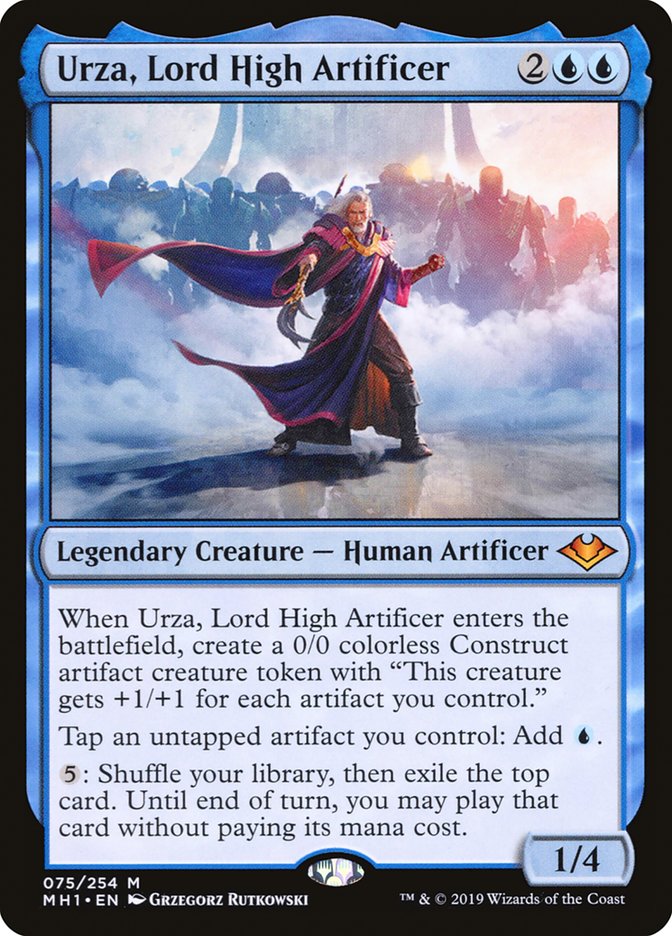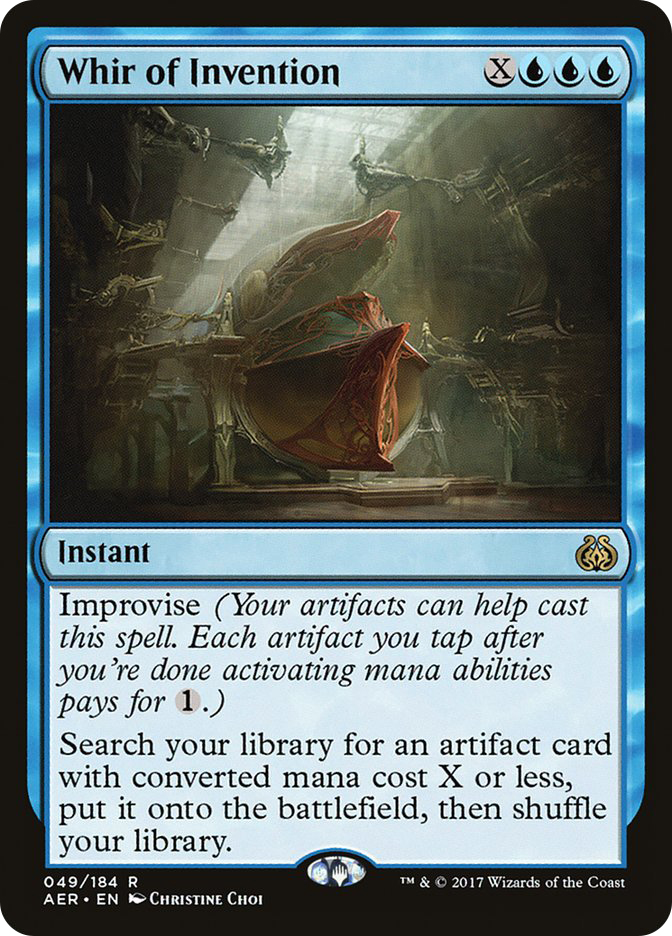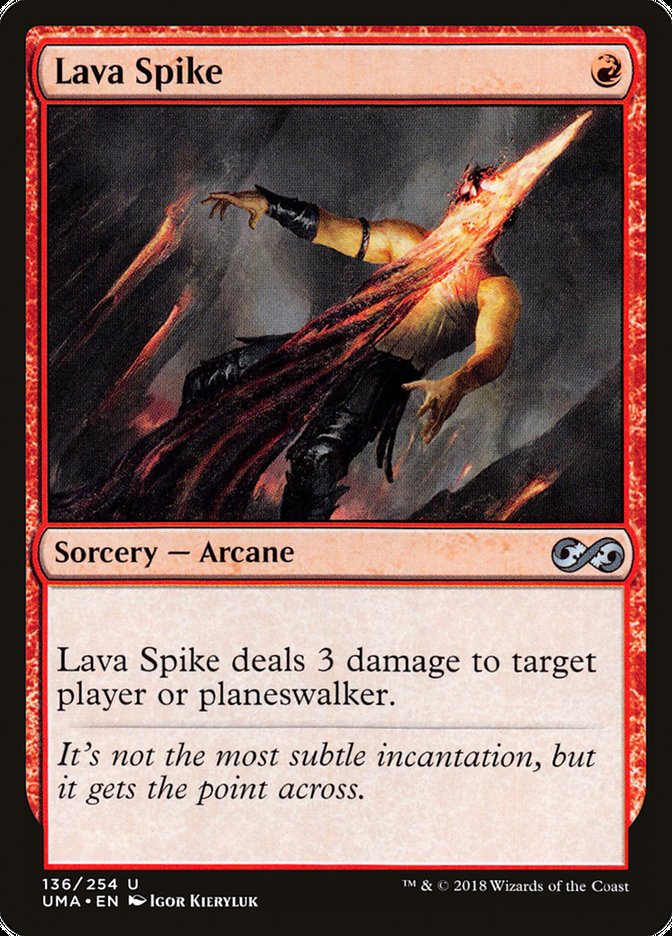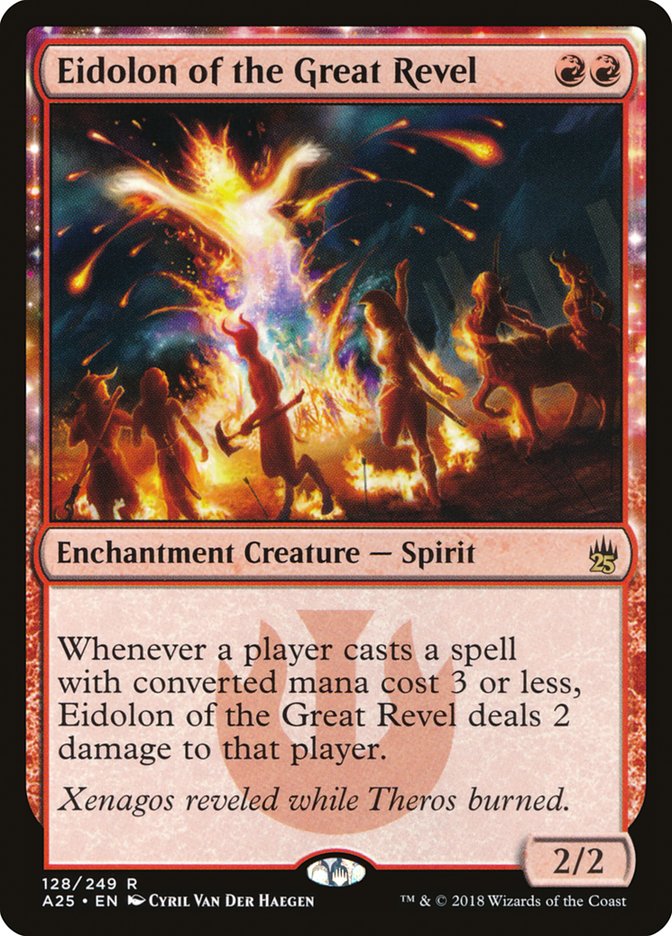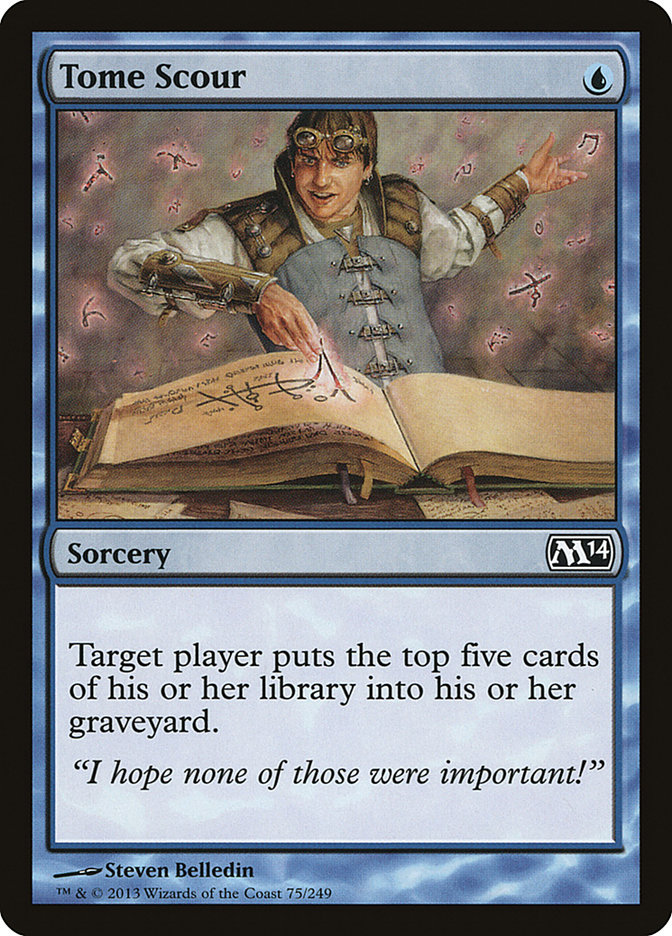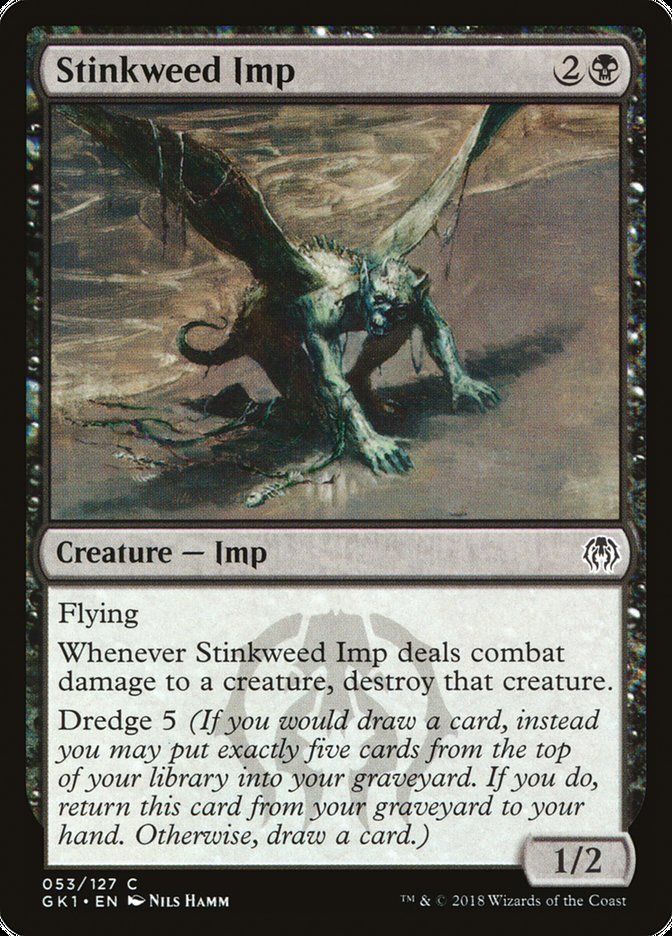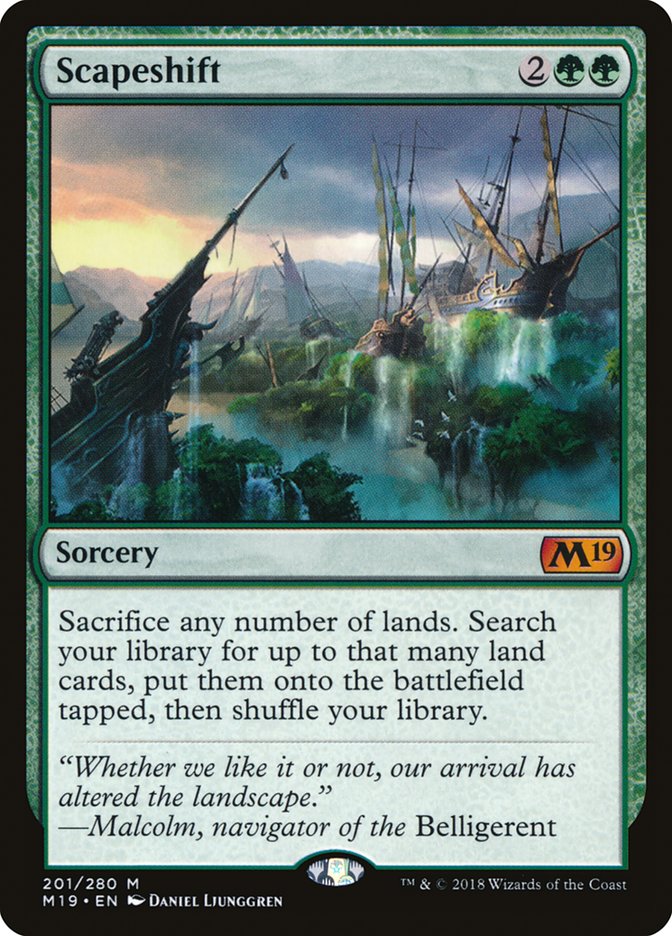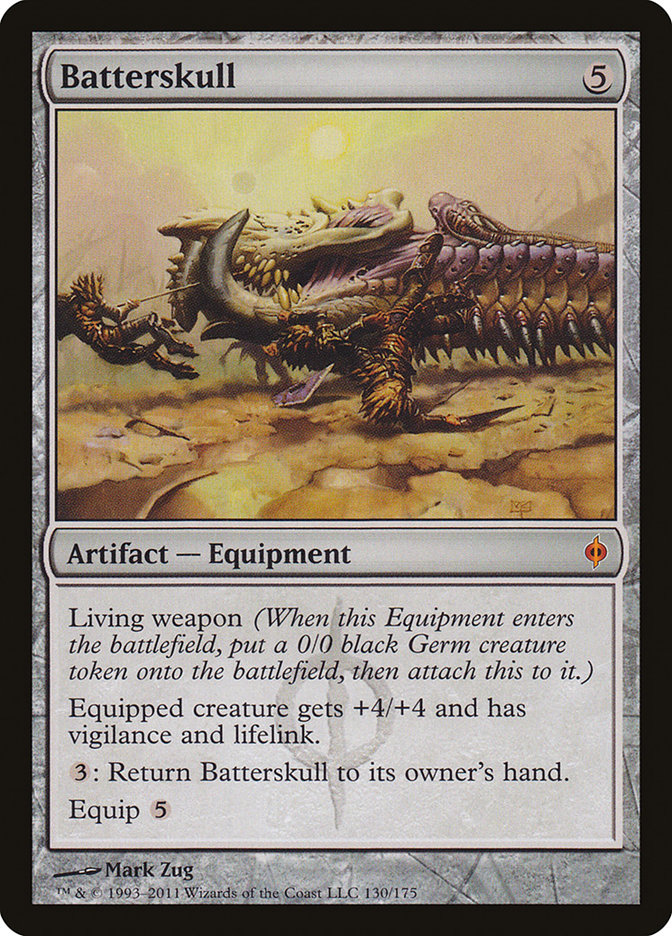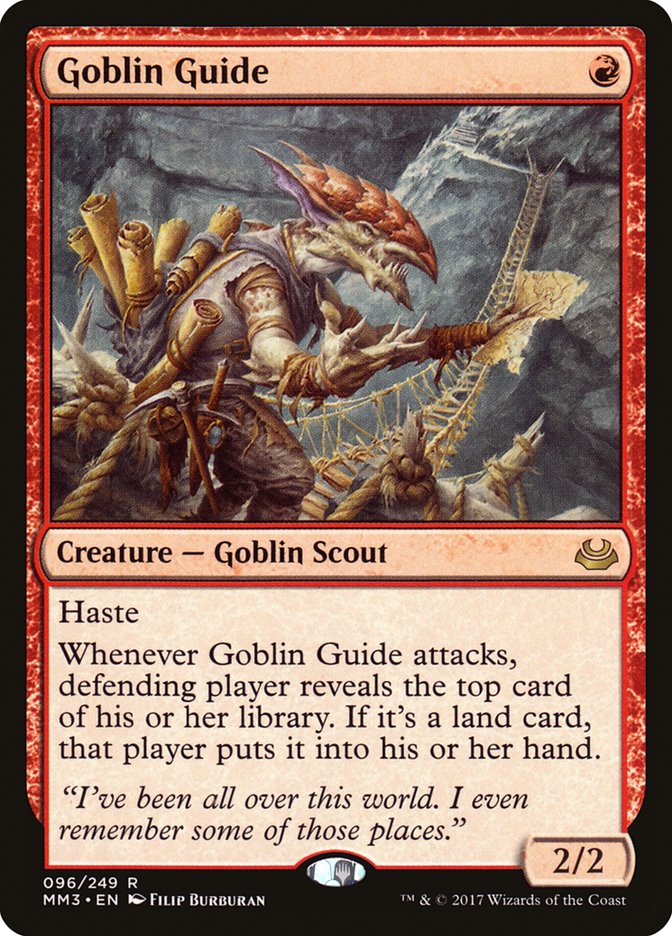Welcome to another edition of Fact or Fiction! Today, Todd Anderson, Ari Lax, and Patrick Sullivan are here to render their five statements about the state of the Modern format. Don’t forget to vote for the winner at the end!
1. With Harlan Firer’s dominant win at SCG Dallas, Four-Color Whirza is now the clear deck to beat in Modern.
Todd Anderson: Fiction. While this deck is very good, I think it will function similarly to Ironworks from a few months back. It might be the universal “best deck,” but it takes a strong pilot to play it, and I doubt a ton of people will pick up the archetype. It isn’t overly difficult to play, but it does play a ton of cards that have virtually no overlap in other archetypes. As a result, it will be incredibly difficult for most people to switch to this archetype without having to buy an entirely new deck.
I also think Burn will show up in higher numbers, and likely have a better win rate, than Four-Color Whirza. It was the most played deck in Dallas and was the only archetype to put multiple copies into the Top 8. With that said, Burn is one of those decks that can get hated out if the format becomes aggressive towards it. I doubt people will be overly prepared for Burn this weekend, but you’re likely to play against it two or more times regardless of what region you play in.
Ari Lax: Yet again, Fact minus a word. A deck to beat. Until you have actual iterated events showing multiple copies of a deck winning regardless of adjustment, nothing is the deck to beat. Dredge could have crushed SCG Dallas, but no one would think a week later, versus more than one Tormod’s Crypt in the entire room, things would be as easy for it.
Of course, last time I said a deck was a deck to beat and not the deck to beat it was Hogaak. So maybe in three weeks I’ll be wrong and we will be waiting for Wizards to save us from [broken Modern Horizons free spell] and [longtime broken archetype enabler]. But, for now, just play Stony Silence and stuff.
Patrick Sullivan: Fact. Modern Horizons is a deep and powerful set, but that fact was obfuscated by Hogaak, Arisen Necropolis. Hogaak pushed the format into only a handful of decks, and so the real depth of Modern Horizons wasn’t on display in the few months. Now, with Hogaak banned along with Faithless Looting, the format is significantly toned down in narrowness and overall power, allowing the second wave of Horizons staples to enter the format. Urza, Lord High Artificer might be the best of the bunch, especially alongside the base of snow cards that play well with a grindy, artifact-centric enabler.
For a deck constructed around artifacts, Whirza is robust against anti-artifact measures, and the graveyard hate required to break up the Sword of the Meek / Thopter Foundry combo was largely absent from the SCG Dallas metagame. The deck is capable of grinding long games or powering out fast infinite combos and has enough interchangeable pieces that it can sideboard into the appropriate powerful interaction for a wide array of matchups and card types.
I expect Whirza to be the top deck in Modern in the upcoming weeks.
2. After an impressive display at SCG Dallas by Team Lotus Box, it’s time for Burn to be considered a Tier 1 deck in Modern.
Todd Anderson: Fact. I think Burn has always been on the cusp of Tier 1 and is occasionally the best deck on any given weekend when people stop respecting it. Like Affinity and a plethora of archetypes before it, a lot of powerful Modern decks are only as good as the amount of sideboard hate people are throwing at it. Modern is full of haymaker hate cards that absolutely obliterate some archetypes, but Burn seems to be one that carries on.
In a tumultuous format, I’m always going to give a nod to the presence of a good red deck. It attacks from an angle that many people can’t interact with in a positive way, and often punishes people for trying out new stuff. And after a ban or release of a new set, red decks are almost always running at the top of the field, if only because they tend to roast all those bringing decks that aren’t exactly optimal.
Ari Lax: Fiction. Burn isn’t reliably faster than the real London mulligan decks and can’t exploit that rule well. Burn loses more to incidental cards like Thopter Foundry or Lightning Helix or Batterskull. Burn loses more to incidental sideboard cards like Auriok Champion or Modern Horizons standout Weather the Storm. Burn loses when people replace Faithless Looting with Tome Scour and just go back to Creeping Chill.
But if your opponent doesn’t do that, you crunch them. Jund, slower Tron variants, and a bunch of assorted nonsense are all easy mode. Burn is in the Tier 1.5 set of decks like Amulet Titan that can easily weave through the right metagame and crush a given weekend. Overall, that’s not bad for Lava Spike.
Patrick Sullivan: Fact. Burn has been on the fringes of Modern’s top decks until recently, when Faithless Looting-fueled strategies pushed out every deck that wasn’t cheating on resource development in some fundamental way. With Faithless Looting now gone and more of the field playing a somewhat-honest game, Burn was poised to make its return as one of the format’s foundational decks. While not as flashy as some of the other new cards, Sunbaked Canyon represents a major shot in the arm for Burn, alleviating its biggest baseline weakness, flooding out.
I’m not sure we’ll see a repeat of the performance Team Lotus Box had in Dallas in the near future, however. The secret is out, and I expect a surge of Collective Brutalities and Kor Firewalkers, among other anti-red measures, now that the lay of the land is better defined. Even in a more hostile metagame, I expect Burn to be heavily played and among the most-represented decks in the second day of any large Modern event going forward.
3. With disappointing performances at SCG Dallas and Magic Online events this past weekend, decks with Stoneforge Mystic simply aren’t as good as originally advertised.
Todd Anderson: Fiction. I’ve always argued that Stoneforge Mystic was fine for Modern. I got a little scared after watching some of the gameplay over the last few weeks, afraid that it might end up being too good, but I think the format just has enough checks and balances that either Stoneforge Mystic itself gets blasted or decks are able to invalidate Batterskull.
One week isn’t enough to determine whether a card is busted in Modern. Sometimes it takes a few weeks for people to find Izzet Phoenix, even though all the pieces are right there in front of them. Either the archetypes we’re building just aren’t good enough, or the lists we’re using aren’t refined. Sometimes it takes throwing conventional wisdom out the window and looking at different ways to abuse a particular card or iteration.
Ari Lax: Fiction. It’s disappointing to only get ninth through twelfth place at an Open and not hit Top 8.
It’s disappointing to only put eight copies of Stoneforge Mystic into the Top 8 of the Magic Online Modern Challenge and not match the fifteen copies in the MCQ Top 8 the next day.
Stoneforge Mystic’s “rough weekend” is only disappointing if you thought it would be Hogaak levels of good. Instead it’s just one of the best cards in the format with success across all types of archetypes.
Patrick Sullivan: Fact now, Fiction soon. Players who wanted to use Stoneforge Mystic had about one week to work on decks for SCG Dallas for a format that was simultaneously heavily iterated and largely unknown. Put any “normal” Modern card under those constraints and it would be shocking to see the card show up in any significant numbers or success. Given that framework, I would argue Stoneforge Mystic had a successful debut, making up a reasonable portion of the Day 2 field with multiple cash finishes and several players just outside of the Top 8.
The card itself is weak against Whirza (assuming a normal selection of Batterskull and a few Swords) and overrated against Burn, so Stoneforge Mystic may not be the best-positioned card in this exact moment. But it is powerful in absolute terms and can fit into a variety of shells. I think that the notion that Stoneforge Mystic isn’t good enough for Modern or that the results of Dallas indicate some fundamental problem with the card will be disproven in short order.
4. Though the deck lost Faithless Looting, the addition of self-mill cards like Tome Scour and Memory Sluice still makes Dredge a Tier 1 deck in Modern.
Todd Anderson: Fiction. Dredge is dead. Unless someone completely rebuilds it from the ground up, it’s just going to be a shadow of its former self. Faithless Looting gave it too much, and did too much, for it to just overcome that kind of a ban. Not only was Faithless Looting integral to setting up your early graveyard effects, it also gave you a way to explode on the third turn if you didn’t find anything else useful to do. The flashback on Faithless Looting was a huge part of why it was so good for so long.
Without Faithless Looting, there is no traditional Dredge as we know it. I do think the Dredge mechanic itself is still powerful, but you’re going to have to show me a good version of Dredge before I believe that it’s anywhere near playable, let alone Tier 1.
Ari Lax: Fact.
Dredge. Messed up.
Tome Scour. Fast.
Blue mana. Easy.
Polish Dredge Master Sodeq. Elated.
Burn players. Distraught.
Cedric Phillips reminding himself of Memory Sluice? Brave.
Patrick Sullivan: Fiction. I think you can get by with inferior options. Hedron Crab, Tome Scour, and other cards of roughly that power level have shown up before, and Dredge has a habit of overperforming with weaker cards, albeit against unsuspecting opponents, like the present moment. But I think Faithless Looting was too important to the previous build of Dredge for two reasons not captured by other options.
First, low information on mulligans. Hedron Crab might not give you anything to work with for several turns; Tome Scour can miss altogether. You are compelled to keep hands with an enabler but no promise of anything emerging, as opposed to Faithless Looting, which gave you much more certainty on which hands should be kept versus sent back.
Two, the flashback on Faithless Looting helped insulate the deck from hitting “dead ends” in which the dredge cards were back in the player’s hand but there was no way to get them back into the graveyard. Looting made it possible for the deck to both get off the ground and continue to hum after the initial engine was situated, whereas the other options require more cumbersome measures.
Cathartic Reunion and Tormenting Voice are plausible options for bulk-rate discard, and some of the comical options at one mana might be contextually good enough to keep the deck afloat for its most committed devotees. Faithless Looting was an enabler without peer, however, and without a wave of new options I suspect the deck will be relegated to the edges of the format.
5. This past weekend’s Modern metagame was the best Modern metagame the format has ever seen during its lengthy history.
Todd Anderson: Fact. While Burn was a bit oppressive in the Modern Open, the deck dump from Magic Online showcased 100 different decks. It was clear to just about everyone that Faithless Looting was oppressive, and root cause for multiple decks absolutely stifling the rest of the competition. Without it or Hogaak completely embarrassing the rest of the format, a lot of lesser-known archetypes are starting to peek through the cracks.
Eventually, as is always the case with Modern, there will be an established metagame featuring five or so decks at the top, and twenty or so oddballs one notch below that can win a Modern tournament on any given weekend. The format is full of powerful cards and interactions, and sometimes people just can’t beat Chalice of the Void or Blood Moon or Skred or Lantern of Insight or whatever.
Except Merfolk. Never Merfolk.
Ari Lax: Let’s Check the History Books. I’ve been deep in the Modern trenches the entire format and I was a huge fan of the (not Hogaak) format prior to Mythic Championship V, but I want to fact check this.
- 2011 Modern was a Blazing Shoal, Punishing Fire mess.
- 2012 Modern was Affinity, Izzet Twin, and Mono-Green Tron with some bad fair decks.
- 2013 Modern was fine, but the decks sucked. I almost Top 8ed a Pro Tour with Giant Growth.
- 2014 Modern had Twin and Treasure Cruise.
- 2015 Modern had Summer Bloom.
- 2016 Modern had Eye of Ugin and Golgari Grave-Troll.
- 2017 Modern was everyone reacting to Fatal Push.
- 2018 Modern was everyone reacting to Meddling Mage.
- Early 2019 Modern was everyone reacting to Arclight Phoenix.
Okay, my answer is now Fact. Current Modern is super-deep and multifaced, and I can’t remember that happening before.
Patrick Sullivan: Fiction. Last weekend represents a major improvement, though it would be hard for Modern to get much worse than the last few months. More than anything, the format really looked toned down in overall power. People were paying two or three mana for cards worth roughly two or three mana. I do not think Modern should perpetually exist as 90% of Legacy’s proactive power with 20% of its reactive power, and last weekend represented a needed nudge towards something representing equilibrium.
Still, Modern is at its best when a dozen or more decks are fighting for a seat at the top tables, and SCG Dallas was overwhelmed by Burn and Whirza both in the second day and in the elimination rounds. Were this one weekend among many different ones in the next few months, there isn’t anything wrong with that. If it’s actually emblematic of how good those two decks are relative to the rest of the field, that’s a major problem. My intuition is that it’s much more likely the former than the latter, but I’d like to see more diversity in the upcoming months before declaring this the Golden Age of Modern.


